Coconuts grow on beautiful trees. They’ve had songs written about them (“I’ve Got a Lovely Bunch of Coconuts,” anyone?), and we’ve been consuming coconut products for a long time, from candy bars to creamy Thai soups. But it’s only recently that they’ve taken the world by storm. From oil to water to personal care products, the formerly humble coconut has become a celebrity in the plant world.
But it’s a controversial celebrity, with as many detractors as cheerleaders. There’s a raging debate about the nutritional benefits and harms of various coconut products, and there are reasons to be concerned about the ethical and environmental impacts of the global coconut trade, too.
What Are Coconuts, and Where Do They Come From?

A coconut is a fibrous, one-seed drupe (a strange word that means a fruit with a hard kernel inside, like a plum or a peach), but can be considered a fruit, a nut, and a seed all at the same time.
There are two original species of coconut: the Pacific Ocean and the Indian Ocean species. They met and had a child: a coconut variety found in Madagascar and the Comoros Islands, which is a genetic mixture of those two species. You also find tall and dwarf coconut varieties in Polynesia, called niu kafa and niu vai fruit, respectively. Dwarf coconuts are small, as their name indicates, and make up only 5% of the world’s coconut population.
Coconut Uses
Coconut trees live for about 100 years, but they reach their peak production (as many as 400 coconuts per year) between 10 and 30 years of age. Coconuts take a year to mature and ripen fully, but they can be eaten anytime after about seven months. Young coconuts are green, and their meat is soft and can be sweet. Most coconut water comes from young coconuts.
As they get older, coconuts begin to turn brown, and the meat inside thickens, hardens, and develops its high-fat content. Most coconut milk, coconut oil, and coconut cream products are made by grinding up the flesh of mature coconuts and then processing it. Many stores sell two kinds of coconut milk: the canned variety, which is very thick and calorically dense, and a heavily watered-down version that’s often used as an alternative to cow’s milk. You can use every part of the coconut fruit. The flesh provides meat, milk, and oil; the water contained within is refreshing (and hydrating).
The fibers in coconut husk can be spun into rope called sennit, and the shell can be turned into charcoal. People have figured out how to use parts of the plant to make everything from mosquito coils to activated carbon water filters and roofing material. An intact coconut can even serve as a flotation device!
It’s because of this myriad of gifts that the coconut is called the “tree of life” in the Philippines and the “tree of a thousand uses” in the Malay language.
Coconut Nutrition
Coconut meat is a high-calorie and fat-rich food, with nearly 300 calories and 30 grams of fat per cup. You can press some of it to make coconut oil, coconut milk, and coconut water.
Some athletes are turning to coconut water as a rehydration and electrolyte replenishment alternative to packaged sports drinks. While pure coconut water is high in calcium, potassium, and magnesium, it’s a bit low in sodium and chloride. Some wellness professionals recommend adding a pinch of salt if you’re using coconut water as an electrolyte drink during and after strenuous exercise.
You can buy coconut milk and cream in cans, while the cream is also sometimes found in the frozen food section. The milk is made by heating equal parts shredded coconut meat with water, while the thicker cream contains four parts coconut meat to one part water.
One cup of coconut milk contains 75 calories, 0.5 grams of protein, and 5 grams of (mostly saturated) fat, and is high in calcium. A mere ¼ cup of coconut cream contains 120 calories, 1 gram of protein, and 12 grams of fat, 8 of which are saturated.
Some manufacturers add guar gum and other additives to make the coconut milk creamier and more uniform in texture. Guar gum produces unpleasant side effects in some people, so if you’re one of them, look for additive-free brands.
Coconut oil is made by blending coconut meat, separating the water from the cream, and processing the cream into oil. Coconut oil is 100% fat, 80–90% of which is saturated fat.
Is Coconut Healthy?
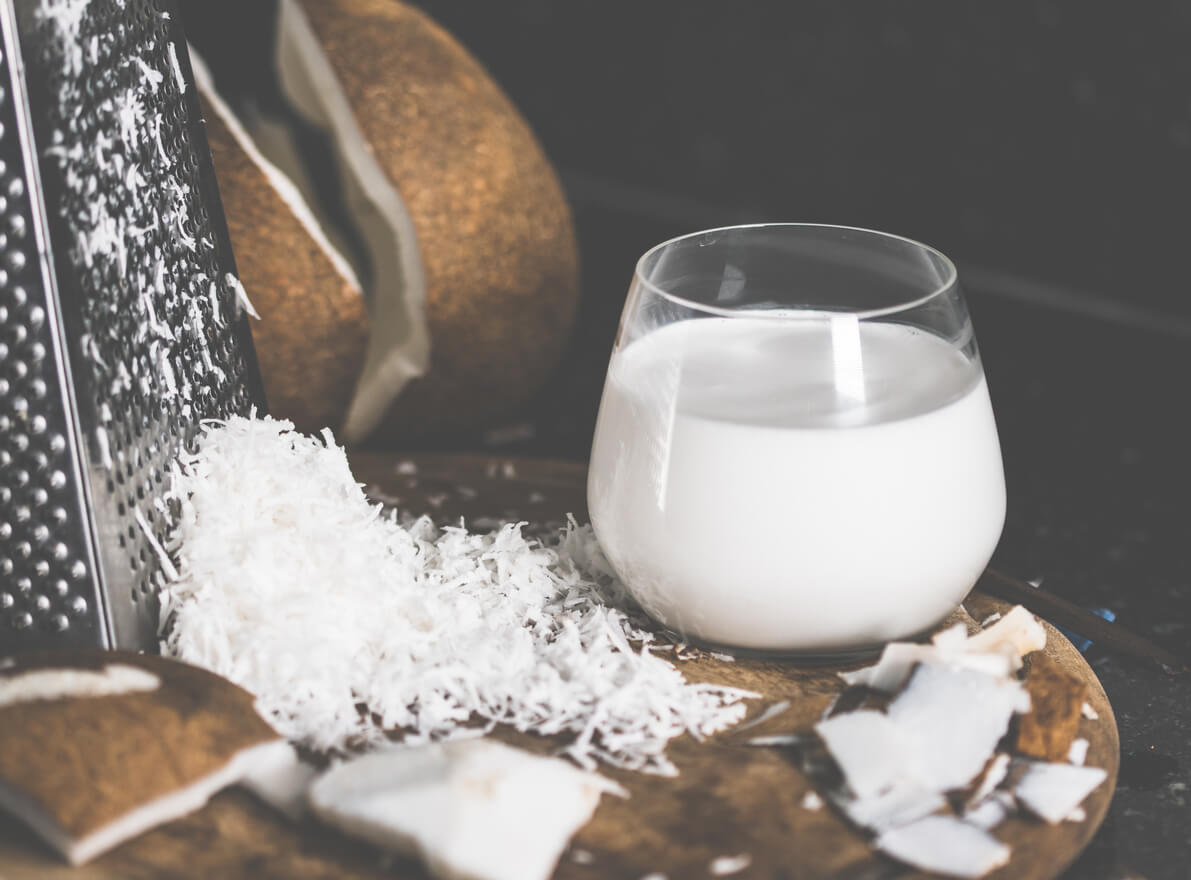
Coconut sparks plenty of controversy. Detractors point out that it’s calorie-dense, which means you can eat hundreds or even thousands of calories of coconut meat without feeling full, which can lead to weight gain.
And then there’s the saturated-fat question: Coconut is loaded with it. Most medical, scientific, heart-health, governmental, and professional authorities agree that saturated fat is a risk factor for cardiovascular disease. This includes the World Health Organization, the Academy of Nutrition and Dietetics, the Association of UK Dietitians, the American Heart Association, and the European Food Safety Authority.
But hold on — there’s a plot twist. It turns out that coconut contains a different mix of saturated fat types than those found in animal products, with the potential for different effects. In fact, some research suggests that coconut meat might even have some benefits for heart health.
One way to explore this issue is by looking at rates of coronary artery disease in populations that have traditionally relied on coconut products for the majority of their calories. A well-studied example is the Marshallese people on the Marshall Islands. They traditionally ate a diet that derived most of its total calories from coconut and coconut products. As recently as 70 years ago, their rates of chronic disease were quite low.
Since World War II, the Marshallese have begun to adopt a more Western diet, consuming fewer coconuts, fruits, and fish, and more white flour, sugar, and dairy products. Tragically, their rates of obesity, diabetes, and other cardiovascular risk factors have skyrocketed.
What we still don’t know is whether the coconuts were healthy in their own right or simply far healthier than what the Marshallese are eating today. Comparing the health effects of a traditional dietary pattern to the modern Western diet is a bit like comparing the gas mileage of a car to that of a gas-guzzling semi-truck that’s stuck in first gear. Almost anything natural will be healthier than a diet based on soda and Cheez Whiz.
Health Impact of Coconut
So, what does more modern research tell us?
The good news is that coconut meat may contain compounds that help regulate blood sugar. A cruel-sounding 2011 animal study published in the journal Chemico-biological Interactions found that diabetes-induced rats fed coconut kernel protein experienced an improvement in diabetes-related pancreatic damage, compared to the control group. The researchers concluded that this was likely a result of the ability of the amino acid arginine in coconut to promote the regeneration of pancreatic beta cells, which produce insulin.
(Our view on the use of animals in medical research is here.)
In a 2013 study published in the Journal of Nutrition and Metabolism, 60 healthy participants aged 18–57 received oatmeal made with coconut milk 5 days per week for 8 weeks. After a two-week break, they then had oatmeal made with soy milk for the same period. The researchers measured cholesterol levels after each intervention, finding that coconut milk raised HDL “good” cholesterol and lowered LDL “bad” cholesterol in statistically significant amounts, compared to soy milk.
However, not all the research is rosy. While coconut milk may be ok, or even beneficial, for LDL cholesterol levels, coconut oil is another story. A 2020 meta-analysis in Nature Reviews Cardiology found that coconut oil can raise LDL (“bad”) cholesterol, which is a known risk factor for heart disease. And while coconut milk and meat may offer some beneficial nutrients, they’re also high in saturated fat — the kind most experts still recommend limiting, especially if you have or are at risk for heart disease. So while coconuts may offer some intriguing health perks, they’re probably not the heart-health miracle some headlines have made them out to be. Moderation is still a wise move. And while the data is mixed, it appears that for most people, coconut oil, at least, tends to raise, rather than lower, LDL cholesterol levels.
Coconut Water
And let’s not forget about coconut water, which, in addition to being delicious, is also very high in potassium. Having the right potassium-to-sodium balance is important for hydration and overall health. Most people in the modern world are vastly out of balance, getting far more sodium than potassium in their diets. How lovely, then, that a cup of coconut water provides 600 milligrams of potassium (and almost no sodium).
Coconut water can help rehydrate people with severe gastroenteritis, a condition in which the inflamed lining of their digestive tract makes it difficult to eat or drink.
There may also be anti-inflammatory compounds found specifically in coconut water. In an ethically dubious 2016 animal study, rats with paw swelling were either given oral distilled water, coconut water from young coconuts, coconut water from mature coconuts, or an injected ibuprofen mixture. The researchers found that young coconut water had the strongest anti-inflammatory effect, while mature coconut water had a milder, but still impactful, anti-inflammatory effect. Remarkably, the study found that young coconut water was more effective than ibuprofen, a drug frequently prescribed for its anti-inflammatory properties.
That said, coconut water is naturally sweet — it typically contains around 6–7 grams of sugar per cup. While that’s less than most fruit juices or sodas, it can still impact blood sugar, especially if you’re sipping it frequently throughout the day. And like all sweet drinks, it can also contribute to tooth decay if consumed often and not followed by oral hygiene. So yes, coconut water can be a refreshing and hydrating choice — just maybe not one to guzzle by the gallon.
Is Coconut Oil Good for You?
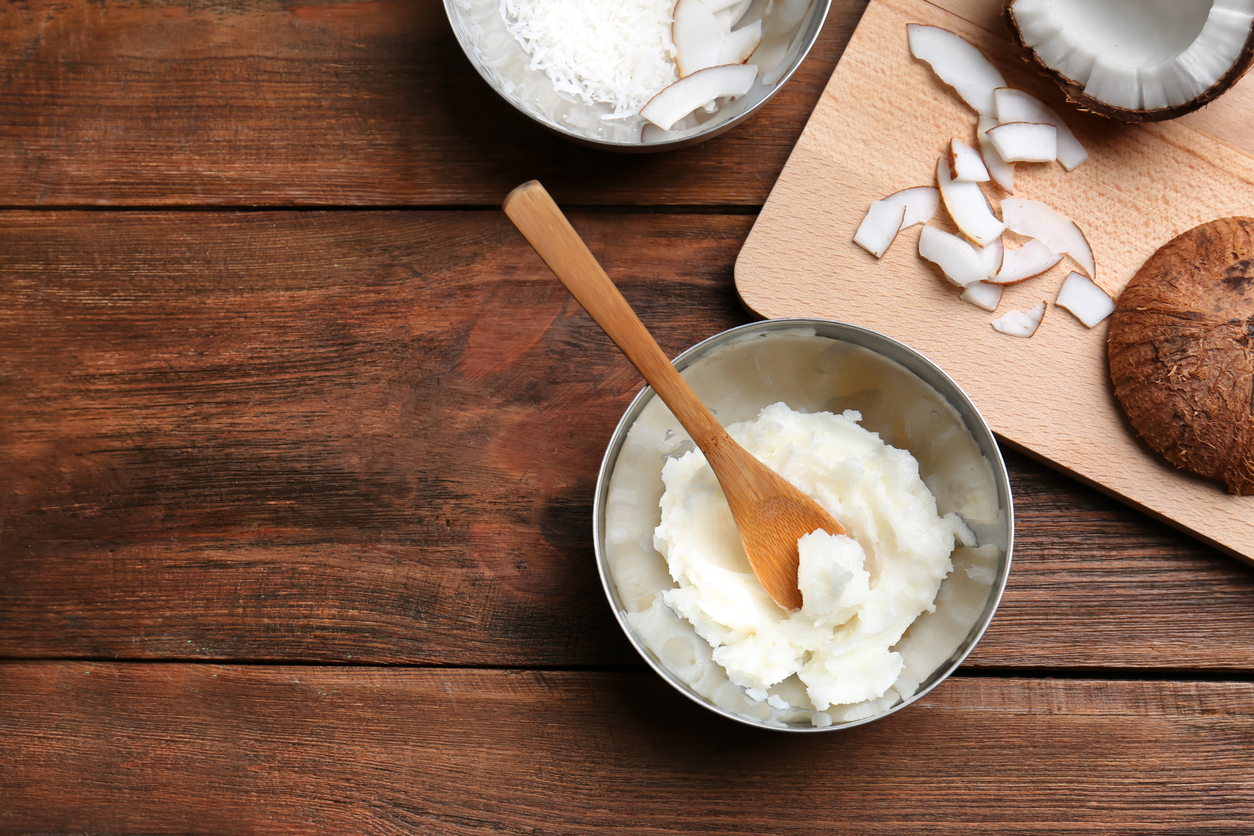
Coconut oil is especially popular right now and has been hailed as somewhat of a “miracle cure” for a variety of conditions. Some of these include Alzheimer’s and other dementias, cancer, diabetes, digestive conditions, high blood pressure, AIDS, herpes, kidney disease, Parkinson’s disease, and pretty much any other serious illness you may be facing.
If you Google “coconut oil,” the first two questions posed in Google’s “People also asked” feature are, “What is coconut oil good for?” and “Why is coconut oil bad for you?” Talk about mixed messages! While stories and testimonials abound, what’s largely been missing is scientifically rigorous evidence.
Coconut oil is 100% fat, the majority of which, as we’ve seen, is saturated. But while the scientific consensus developed over the past 70 years has been that saturated fat is bad, the truth turns out to be a bit more complicated. There are many different kinds of saturated fat, each of which has a different effect on your body. Depending on the length of their carbon chains, various saturated fatty acids have very different effects on human health. And there are two kinds of saturated fat, at least, that may bring net health benefits.
Lauric Acid
For example, lauric acid, which makes up about half the fat in coconut oil, has been shown to favorably alter the ratio of HDL (“good”) cholesterol to total cholesterol. While lauric acid does raise total cholesterol, it typically raises HDL cholesterol to a greater extent than LDL, leading to a healthier ratio. It’s unclear what effect this may have on heart health and longevity. But at least, based on lab results, it could be a positive step. (For more on cholesterol, read this article.)
Lauric acid converts to a compound called monolaurin in the body, which may have antiviral, antifungal, and antiseptic properties. It’s for this reason that many people have tried “oil pulling,” or the process of swishing and spitting out coconut oil for oral hygiene.
MCTs
Coconut oil is also a source of medium-chain triglycerides (MCTs), which may offer health benefits like supporting healthy weight loss, brain function, and insulin sensitivity. However, the benefits of MCT oil in coconut may be overblown because many studies showing benefits were based on 100% MCT oil. In contrast, coconut oil contains only around 14% MCTs.
The Skinny on Coconut Oil
The bottom line is that coconut is delicious, useful, and potentially nutritious. But coconut oil is a processed food, and it may be the least healthy way to consume coconuts: Many of the compounds in coconut and coconut products that are responsible for its health benefits, including most of its flavonoids, antioxidants, sterols, stanols, and phytochemicals, are largely from the processed oil.
You’ll find two main types of coconut oil in stores: refined and unrefined. Refined coconut oil has been bleached of its color and deodorized. Often, sodium hydroxide is added to increase its shelf life. A typical part of the manufacturing process for refined coconut oil is to use chemical solvents to extract the oil. The only advantage of refined versus unrefined coconut oil is that it cooks at very high temperatures, with a smoke point of 450 F (232 C), whereas unrefined coconut oil has a smoke point of 350 F (175 C). In addition, refined coconut oil has a milder flavor than unrefined coconut oil.
Other Uses of Coconut Oil
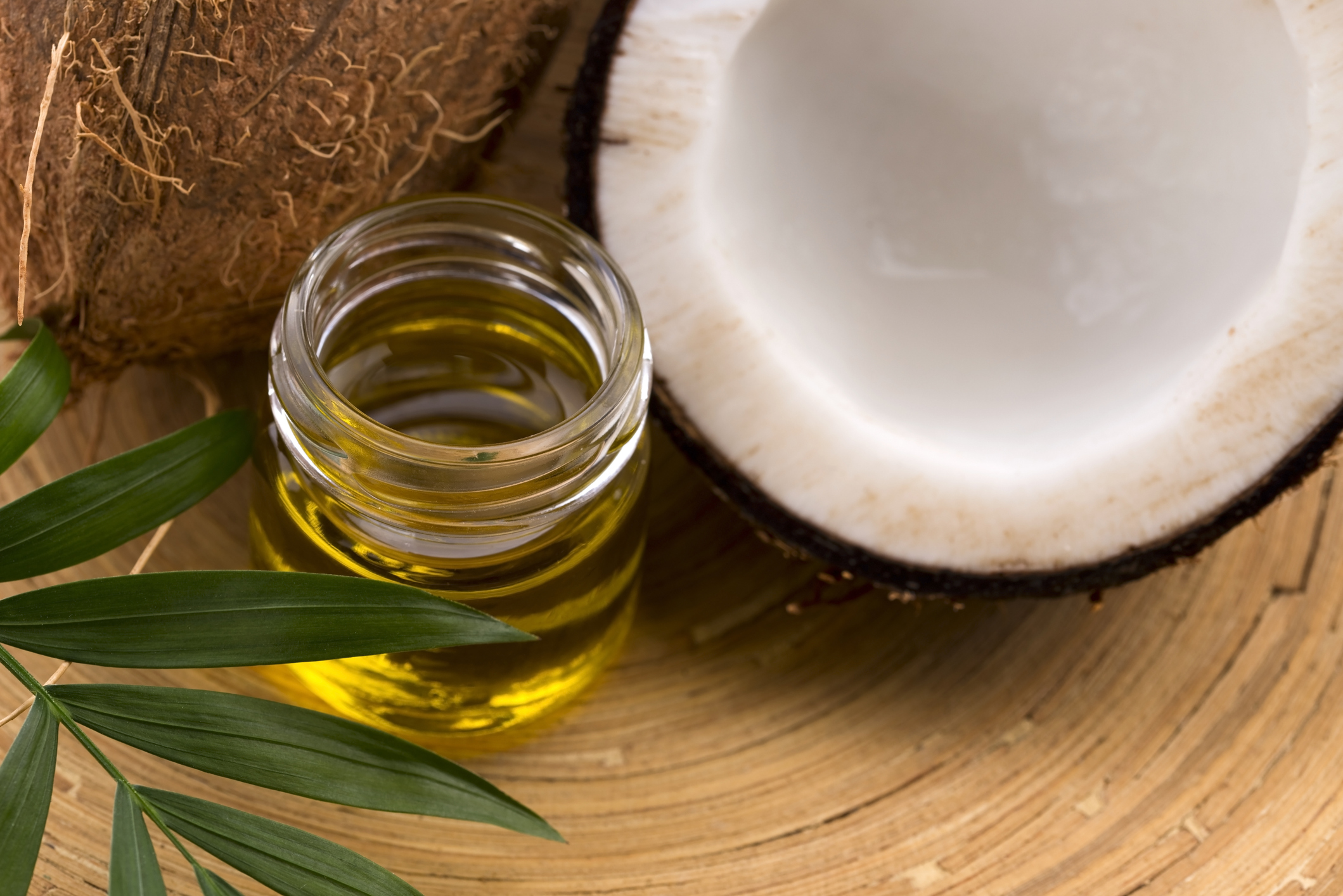
Besides being a kitchen staple, coconut oil does have some great personal care benefits. Coconut oil is highly rehydrating and has multiple uses, including as a lip balm, skin and hair moisturizer, lubricant, remedy for diaper rash, and even as a shaving cream. It also has uses as a makeup remover. Natural soap makers favor coconut oil as a main ingredient, as it produces a hard bar that lathers well without requiring laurel and laureth sulfate as foaming agents.
Are Coconuts Ethical or Sustainable?
The global demand for coconuts has been rising rapidly, at a rate of more than 10% annually. Production isn’t keeping up, which is driving up prices for all things coconut. Unfortunately, little of that money reaches the farmers who grow the coconuts.
Most coconut farmers in Southeast Asia are living in poverty, often earning less than $1 per day. The world demand for coconut centers on value-added products such as virgin coconut oil, coconut water, and activated carbon filtration elements, rather than the raw fruits. The processors, distributors, marketers, and retailers receive roughly 89 cents of every dollar spent on these coconut products, while the farmers end up with a meager 11 cents.
Without enough income to invest back into what they’re growing, many farmers cannot adequately protect their coconut crops against things like pests, inclement weather, and environmental destruction. Neither can they invest in long-term sustainability.
Coconut Cultivation Can Be Problematic
Because of the increasing popularity of coconut products, the cultivation of coconut palms is a leading cause of deforestation in the tropics. Areas that were previously forested are now occupied by groves of coconut palms, leaving less and less land area for forests.
Deforestation reduces biodiversity, especially because many island nations have unique species that have developed in isolation. When these species’ habitats are disturbed by deforestation and other human interventions, they are at greater risk of endangerment and extinction. In fact, a study published in 2020 found that coconut product cultivation threatens more species than olive, oil palm, soybean, groundnut, sunflower, and rapeseed combined. Coconut plantations were responsible for the extinction of the Ontong Java flying fox in the Solomon Islands, and currently threaten 66 different species in multiple countries.
A small but growing number of coconut farmers are working with Fair Trade USA, which seeks to create a better situation for farmers as well as the environment. This entails using fewer pesticides and promoting more biodiversity among crops. It also reinvests money in disaster relief programs, tree replanting, and community development. If you’re going to purchase coconut products, and you care how they’re grown, and the impact they have on farmers and the environment, buying Fair Trade Certified products is a good place to start. You can look for the Fair Trade logo on the packages of coconut products.
Should You Buy Organic?
How important is it to buy organic coconuts? The answer is, it depends.
If you like to purchase all organic produce, there certainly are organic coconuts and coconut products available. That way, you’re not contributing to the negative environmental impact of chemical pesticides and fertilizers that are used in conventional coconut production.
In terms of your health, non-organic coconuts appear to pose little risk. Thanks to their thick shells and hairy husks, pesticide levels in the edible and drinkable parts of coconuts have been found to be negligible.
A 2002 study looked for 11 pesticides in 15 samples of coconut water and found no detectable levels. And a 2016 study analyzed 36 samples of coconut pulp and water for 10 pesticides, finding only 4 present, but in unquantifiable amounts.
And while many fresh coconuts (the soft ones with meat you can scoop with a spoon) are treated with post-harvest bleaching agents, fungicides, and preservatives to help them survive the boat trip to the US or Europe and still arrive with weeks of shelf-life. I’m not aware of any research showing residues making their way inside the nut.
How To Eat Coconut

While most coconut in non-tropical areas comes in the form of oil or have been shredded, dried, or canned, you might be able to find whole coconuts throughout the year, too. Asian and specialty markets often carry young coconuts, a staple for many raw food lovers.
The coconut’s characteristics change depending on its age. Young coconuts contain more water, while mature coconuts contain more meat. Young coconut meat tends to be mild-flavored and rubbery, while mature coconut meat is more flavorful, thick, and fibrous. On the outside, a young coconut is typically white and angular without a husk. A mature coconut, on the other hand, will be round and have its brown, fibrous outer shell still intact.
The main components you’ll get from a raw coconut include its meat and its water. Some of the best uses include:
- Eating it with a spoon (or your hands!)
- Creamy sauces, like curry or a vegan mac and cheese sauce
- Baked goods, like moist cakes and fragrant desserts
- Beverages, such as mocktails, smoothies, coconut milk lattes, and golden milk made with turmeric
- Soups with a thick base
- In stir-fries
But when you first purchase a raw coconut, the first step is to open it. You can use a hammer and a rock, of course, but there are easier and safer methods (no, don’t run it over with your car!). Here’s a great tutorial for how to open a coconut:
7 Refreshing Coconut Recipes
Here are some tasty recipes using coconut in every angle, from entrees to snacks, desserts, and even beverages.
1.Lemon Coconut Chia Pudding

This creamy chia seed pudding tastes like a lemon coconut creamsicle — yum! The coconut brings a naturally sweet, rich, and tropical flavor that pairs beautifully with the bright, zesty lemon. Lemon Coconut Chia Pudding is super delicious as a breakfast, snack, or dessert. It makes it simple to get a healthy dose of fiber, plant-based protein, healthy fats, and phytonutrients in every satisfying bite!
2. Coconut Red Curry Tempeh and Veggies
Is curry a type of stir-fry? Absolutely — especially when coconut takes the lead. Coconut Red Curry Tempeh and Veggies centers around creamy, light coconut milk, which blends with red curry paste and tamari to create a velvety, sweet-and-spicy sauce inspired by Thai flavors. The coconut milk adds richness while keeping things light, making every bite comforting and satisfying. Toss in protein-packed tempeh and fiber-rich veggies like broccoli, and you’ve got a simple, one-wok meal that’s full of flavor and coconut goodness.
3. Coconut Tahini Dressing
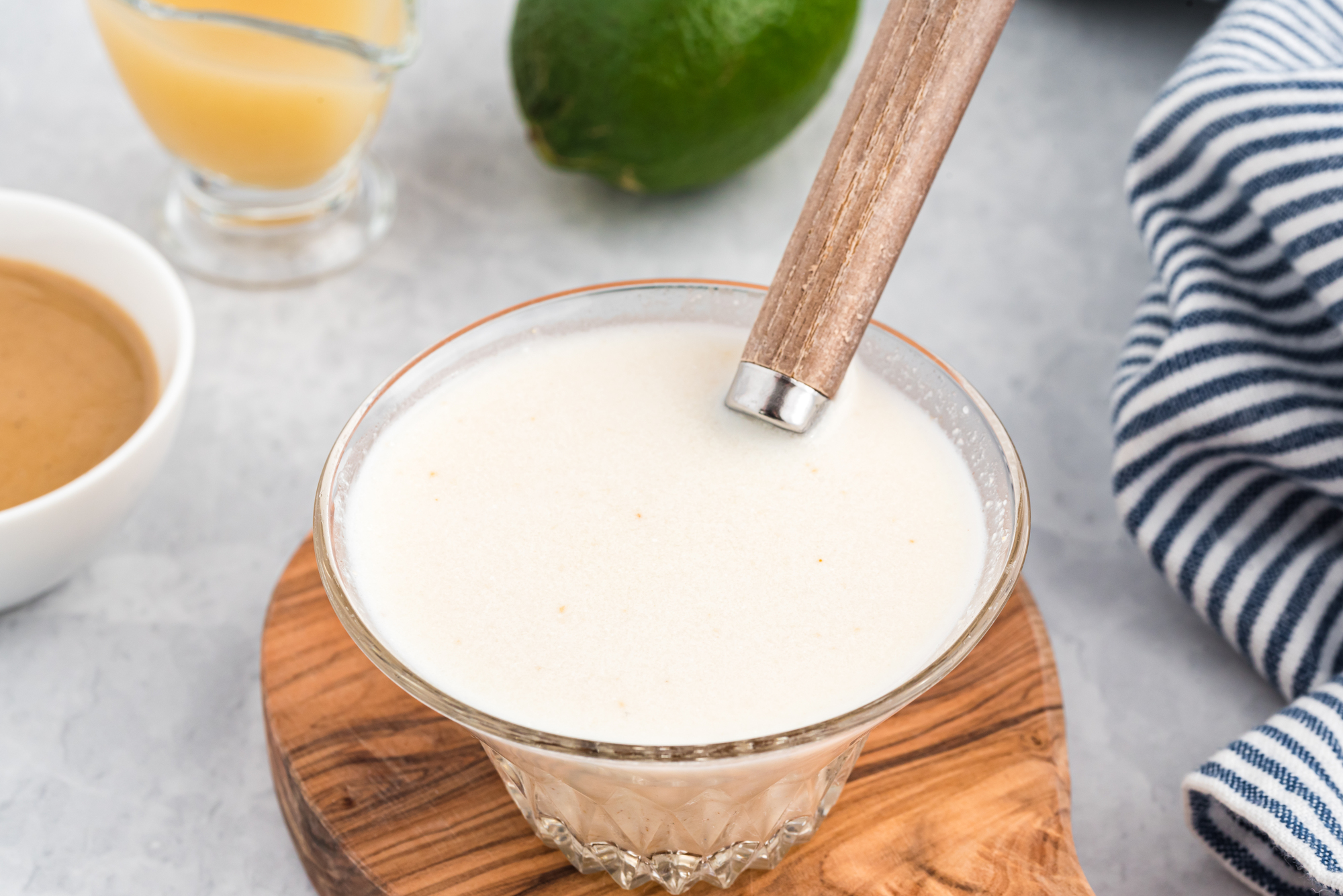
This Coconut Tahini Dressing is all about comfort and creaminess with a plant-based twist. Coconut milk lends its rich texture and subtle sweetness, perfectly balanced by nutty tahini, bright lime juice, and a touch of garlic. It’s a simple yet flavorful way to elevate salads, bowls, or roasted veggies with a hint of coconut richness in every bite.
4. Caribbean Fusion Stew
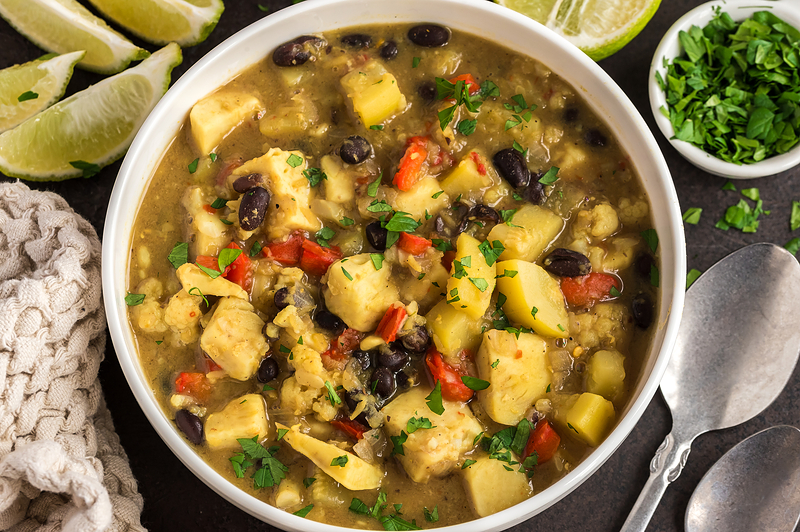
Creamy coconut milk brings the warm, spiced flavors of this Caribbean Fusion Stew to life. Infused with fragrant allspice, cloves, coriander, and turmeric, this stew is both comforting and bold. Coconut milk creates a velvety base that balances the gentle heat of chili flakes and the earthiness of lentils, black beans, and purple sweet potatoes. With tender vegetables, fresh thyme, and a splash of lime to brighten every bite, this coconut-forward dish is a vibrant, nourishing bowl of plant-based comfort.
5. Coconut Lime Quinoa and Asparagus
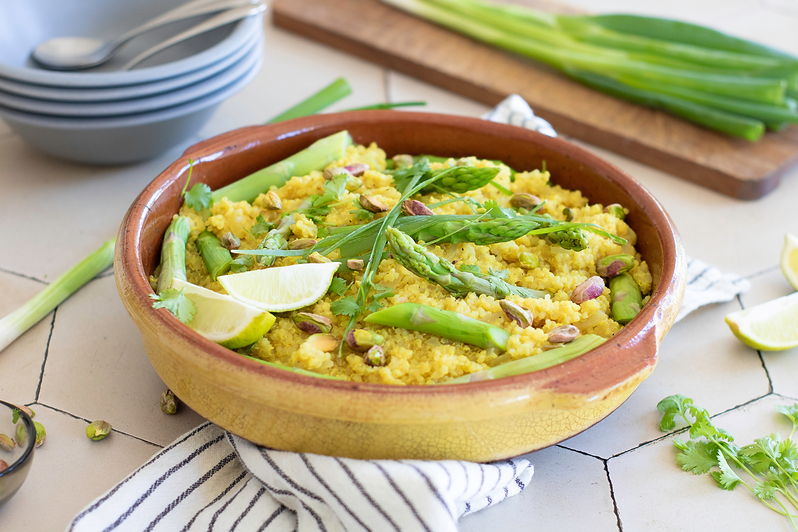
Coconut adds a gentle richness to this refreshing quinoa and asparagus dish, offering a creamy contrast to the crisp veggies and tangy lime. Light yet satisfying, it layers tropical flavor with the crunch of pistachios and the hearty texture of quinoa. The result is a vibrant, balanced meal that feels both energizing and comforting. For even more staying power, toss in some organic tempeh or tofu — but it’s plenty flavorful all on its own.
6. Kiwi Coconut Smoothie
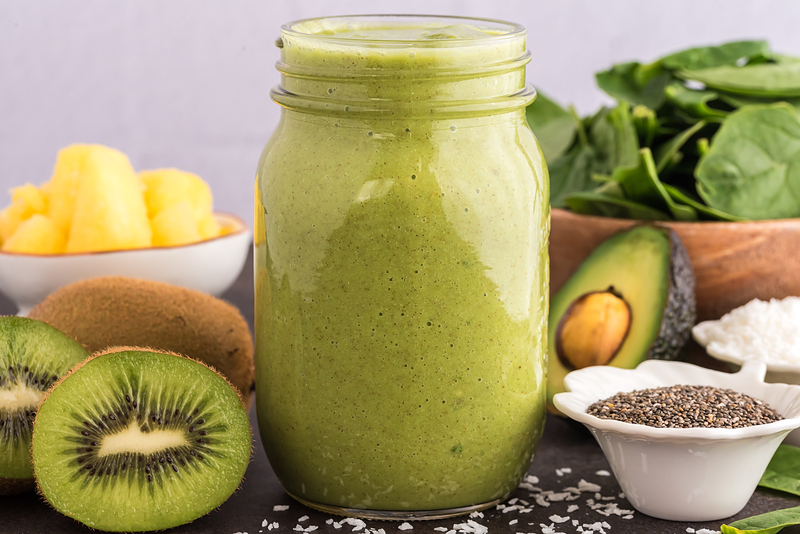
Kiwi Coconut Smoothie gets its refreshing edge from coconut water, which adds natural sweetness and hydrating electrolytes to this tropical blend. Combined with kiwi, pineapple, and creamy avocado, the result is a bright green smoothie that’s light, energizing, and satisfying. It’s perfect for a quick breakfast or a midday cool-down. If you’re a coconut superfan, we highly recommend topping this beauty with unsweetened, shaved coconut flakes for an added touch of pizzazz and more coconut flavor.
7. Coconut Cranberry Snowballs
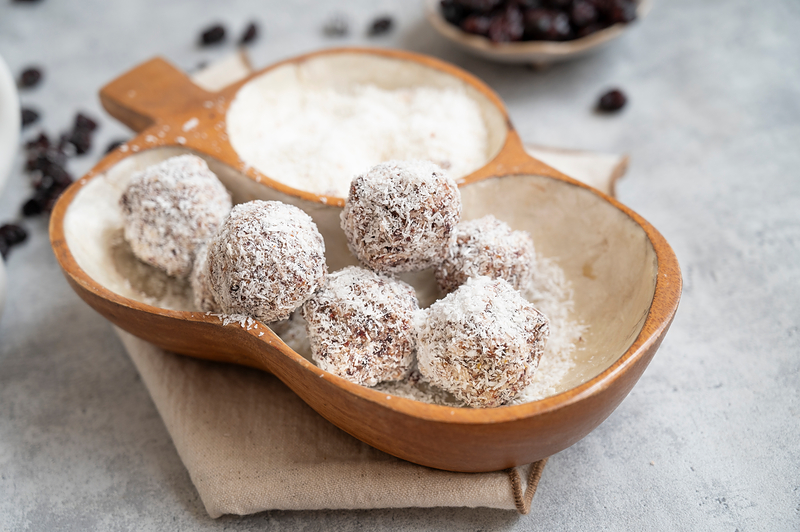
Coconut lovers, these Coconut Cranberry Snowballs are made for you. With rich, naturally sweet shredded coconut in every bite — inside and out — these no-bake treats celebrate the flavor and texture of coconut from start to finish. Blended with oat flour, chewy medjool dates, and tart dried cranberries, they strike the perfect balance of creamy, sweet, and tangy. Soft, satisfying, and rolled in even more coconut, they’re a fun and festive way to enjoy a wholesome coconut treat any time of year.
Should You Eat Coconut?
Studies show us that coconut offers a number of health benefits, but not all parts and forms of coconut have the same health impact. It matters how or if it’s been processed, which parts you’re eating, and where and how it was grown. And there are some people, especially those with heart disease, who should probably steer clear of coconut milk, cream, and oil altogether. And, of course, if ever you purchase coconut products, supporting Fair Trade Certified farmers is a positive investment in farmers, soil, and the world we share.
Tell us in the comments:
-
-
- What do you think?
• Do you eat coconut? If so, in what forms?
• Do you eat coconut oil?
- What do you think?
-
Feature image: iStock.com/id-art



